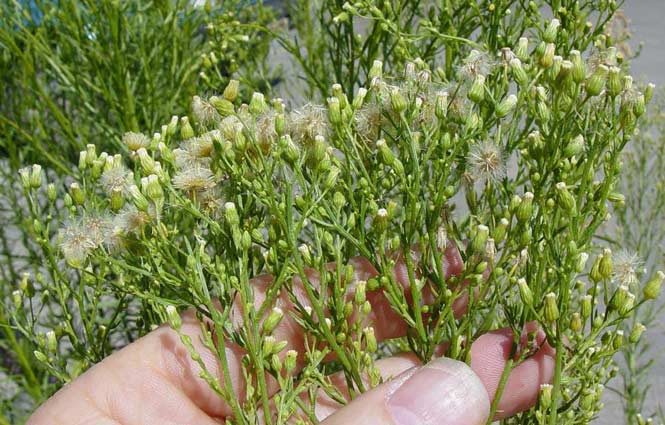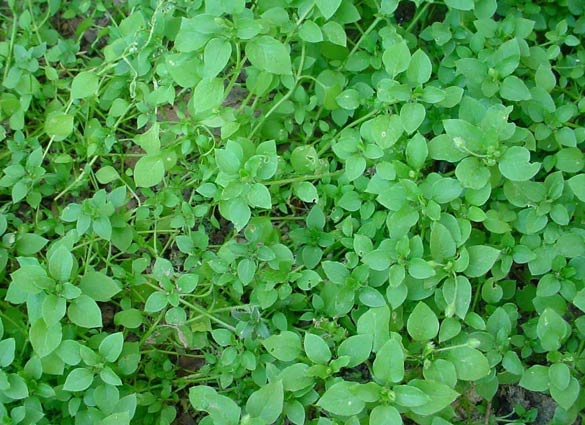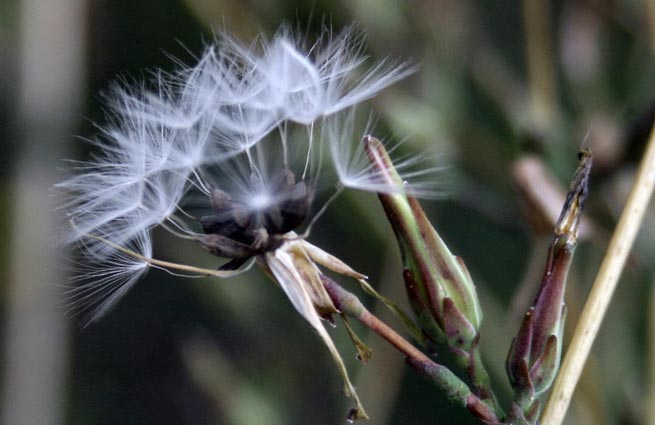Fall Doesn’t Mean the End of Weeds
Did you know that some weeds prefer to sprout in the cooler months? Others sprout after the ground has been disturbed by fall-planting projects.

Shepherd's Purse (Capsella bursa-pastoris) is a winter annual weed that can produce up to 4,500 seeds per plant per season that are viable for up to 35 years. The flat purse-shaped seeds give the weed its name.
Traditionally, fall is the time to harvest fat, orange pumpkins, juicy red apples, and stout stalks bearing Brussels sprouts and broccoli. Unfortunately, fall also yields a less welcome crop: winter annual weeds.
The very idea of winter weeds seems a cruel joke to gardeners who believe the weed season ends with autumn’s arrival. Yet, ironically, the shorter days and cooler temperatures of fall, that kill off summer weeds, provide the exact conditions that lesser-known winter weeds need to germinate.

Often called horseweed, marestail (Conyza canadensis) is an annual weed with seeds that germinate in fall and spring. It can produce as many as 200,000 seeds, per plant per season.
Once winter weed seeds sprout, the plants grow slowly in fall and even over winter. Few gardeners notice their stealthy, under-the-radar existence until, suddenly in spring, tiny weeds surge in growth and quickly take over garden beds.
Summer weeds. Winter weeds. Who knew there were two completely different weed seasons? Yet, two seasons there are – which is why gardeners-in-the-know apply Preen at both times of year: in spring to stop summer annual weeds, that germinate in spring and summer, and in early fall to stop winter annual weeds that sprout in fall. Each application creates an invisible barrier in the top layers of garden soil and mulch that stops weed seeds from taking hold for three to four months.

Common Chickweed (Stellaria media) is a small but vigorous winter annual weed that can produce 10,000 to 20,000 seeds per plant. The seeds, which stay viable for 10 or more years, germinate in fall, winter or early spring.
Still not convinced? Consider a few common winter annual weeds that produce staggering numbers of seeds per plant per season. For example shepherd’s purse (Capsella bursa-pastoris) can produce up to 4,500 seeds, chickweed (Stellaria media) 10,000 to 20,000 seeds, and just a single tall, prickly lettuce plant (Lactuca serriola) ) about 46,000 seeds. Mares tail (a.k.a. horseweed, Conya canadensis) tops them all with a truly horrifying numbers of seeds – topping out at 200,000 seeds each. Any seeds that fail to germinate can lay dormant in garden soil, only to germinate later when conditions are right. They can stay viable for a several years, for a decade, or even up to 35 years or more depending on species.

Prickly lettuce (Lactuca serriola) is a winter annual weed that produces from 700 to 46,000 seeds per plant, depending on its height, which can reach 6 feet. The seeds form in white downy puffs similar to those of dandelions. The seeds remain viable in soil for one to three years.
Best news is that applying Preen is so fast and easy. Since Preen is a pre-emergent garden weed preventer not a weed killer, first remove any already-growing weeds. Apply the granules by sprinkling them on top of garden soil or mulch. Water the bed to activate Preen’s weed-prevention barrier and that’s it. Going forward, routine applications in both spring and fall can reduce future weed growth dramatically. Less time weeding gives you more time to enjoy the outdoors.